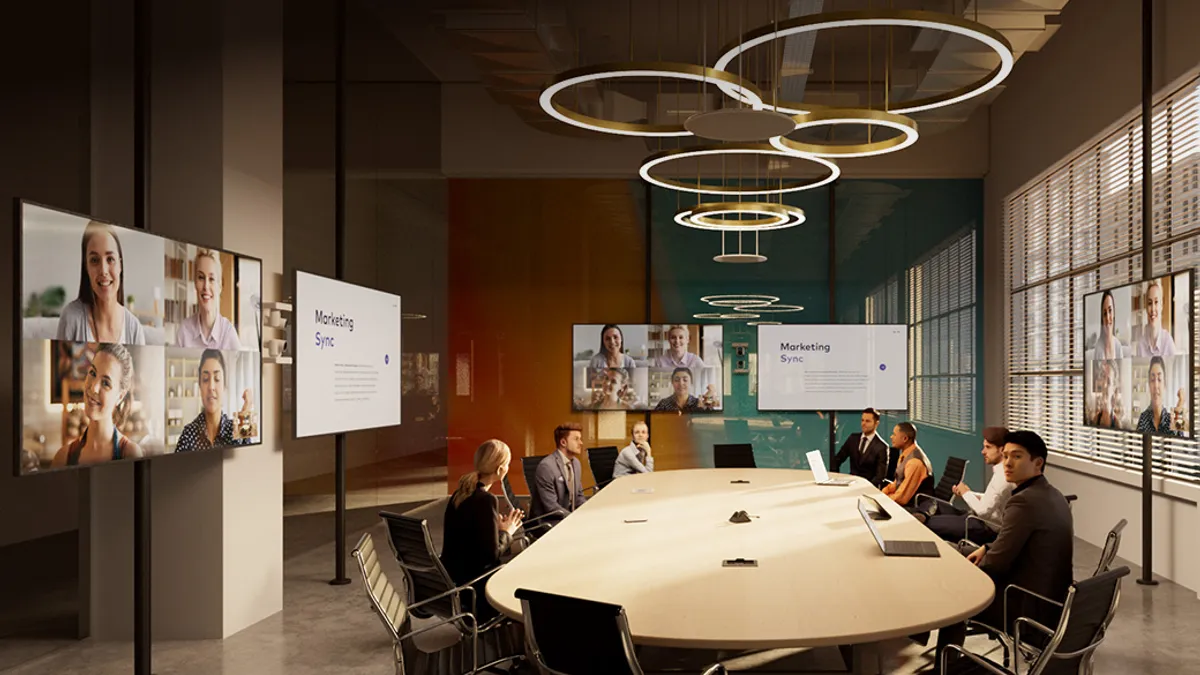You already know about G-A-V. But maybe you’ve never thought of it as a framework. Once you do, it can help make better decisions when upgrading your technology stack. So, what is it?
Following this simple framework allows you to keep up with the latest technology without getting caught by fading trends. It focuses on three core areas:
G-A-V
Goals
Identify your organization's main business goals, priorities, and future roadmap.
Audit
Conduct a technology audit or reference your technology refresh cycle plan.
Vendor
Research, meet, demo, and compare your technology vendor options.
There's nothing new here. It’s just a reframing. Instead of three separate business tactics, it’s one guiding principle. It goes beyond a smooth technology refresh and focuses on the best way to use technology to build a stronger business.
As a leader in workplace technology, we see hundreds of projects deployed every year. We work with IT teams and technology integrators across multiple markets like enterprise, education, and government.
We’ve seen the technology refresh cycles from both sides of the fence. There are some key areas that stand out within each stage of the G-A-V framework.
Identify Business Goals
There’s a trap that some teams fall into. It's called “doing IT for IT’s sake”.
It happens when things break and need to be replaced quickly. It happens when trendy tech makes all the headlines and we experience FOMO. It’s so tempting as a technology professional to get caught up in the hype or move fast in the moment. That’s when it’s important to stop and ask: Will this trend help us achieve our goals in the next 12 months? Will this quick fix give us extra mileage on our road map? Or is the car going to break down in the middle of a desert highway?
These questions force you to stop and zoom out beyond the problem in front of you. Now, you can refocus on the goals (your north star).
Maybe your company’s goal over the next 12 months is to increase orders shipped by “x” amount. You might focus on solutions that syndicate data quickly. These tools help shipping and ordering teams make better and faster decisions. That might lead you to generative AI tools.
If you know your organization is going to start building its AI technology stack, it makes sense to align the rest of your technology strategy.
Then, if your conference room cameras come up this refresh cycle, you can use your goals to justify a new camera purchase. You look for camera solutions that will prepare your meeting rooms for integration with AI. Companies like Microsoft are already implementing generative AI into their meeting technology. Now, you start to look at companies that have native integrations with Microsoft.
It’s easy to justify your camera purchase against company goals. That’s how we move closer to achieving them.
Conduct a Technology Audit or Consult your Technology Refresh Tracker
Can you quickly identify any device that is due for a refresh over the next 12 months?
If not, you need an audit. Either way, it’s not a bad idea. It’s a good way to stay on top of shadow IT practices. It helps mitigate risks and is essential for mapping out your technology refresh cycles. Audits help you plan for a refresh instead of putting out a fire.
Using the gen AI example above, when planning out any refresh over the next 12-15 months, think about solutions that align with those larger goals. If you do the simple, rip-and-replace solution, will that be good enough once AI rolls out further into your organization? Is that piece of technology going to fit into that AI puzzle or is it going to end up being another costly rip-and-replace later?
A refresh is always justifiable. Equipment needs to be updated periodically to keep things running. But your finance and executive teams will feel more confident if a refresh aligns with your goals and isn’t a band aid fix.
Select The Right Technology Vendor
A temptation creeps into this stage. A tech need is identified. We all agree it will help push us toward the company goals. We want it to make an instant good impression on our teams and leadership. So, we are tempted to fill technology gaps with a solution from a specialty vendor (a vendor that is hyper-focused on one product category).
These vendors claim they can make a better product because they aren’t distracted. Sounds like a sensible choice.
Choosing a specialty vendor might work out great. But there is a long-term risk with buying technology this way. When your next refresh cycle hits, and you need to replace a different piece of equipment that is integrated with your specialty product, concerns arise. The specialty vendor doesn’t make the new product. So, you’ll need to look at different vendors. You need to do research, compare pricing and features, and book demos all over again. This is time-consuming, and now you must worry about interoperability.
Most interoperability issues can be solved with custom programming or by using a special piece of gear to bridge connections. But that adds more costs, more time, and more layers of vulnerability.
That’s why IT teams we work with opt for a full-stack provider over specialty vendors. It’s about creating a seamless technology ecosystem from a single vendor. It reduces vulnerability and risk. And if/when issues arise, there’s one support number to contact — not a dozen.
G-A-V isn’t just a framework for buying technology. It’s a reminder to work together toward a better future where we meet our goals and get to play with the latest tech.










